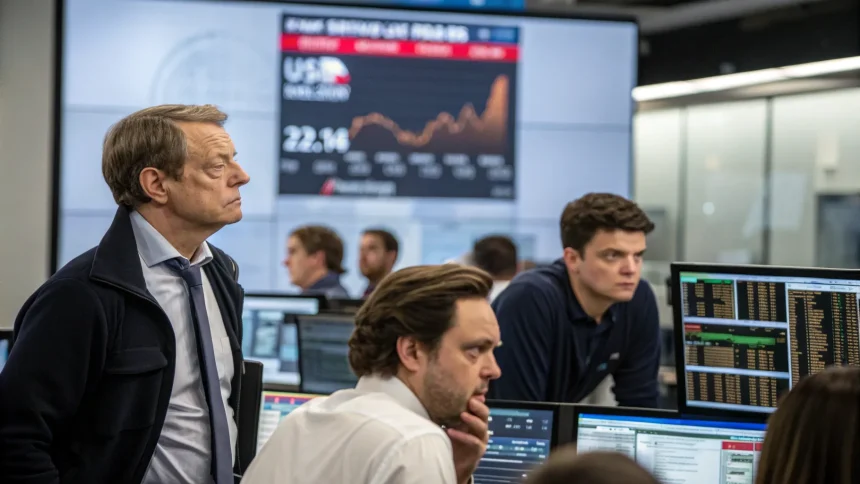The stock market is stuck in a defensive stance, according to Fox Business host Charles Payne, who framed the action with a sports lens on his program Making Money. In a recent broadcast, he argued that investors are cautious, waiting for a clear playbook on rates, earnings, and leadership in equities.
Payne’s take arrives as traders weigh mixed signals. Inflation progress is uneven. Corporate results are solid in some areas and weak in others. The result, he said, is a market that has energy but lacks direction.
“The stock market remains on its back foot.” — Charles Payne
Why Investors Are Playing Defense
Sports terms resonate because the market’s strategy now looks conservative. Investors are keeping extra cash on the sidelines and rotating into safer areas. Many prefer steady profits and dividends over high-growth names that can swing sharply with headlines.
That stance fits periods of uncertainty. Rate policy remains the biggest variable. When bond yields rise, stock valuations come under pressure. When yields fall, relief rallies follow. It has made for choppy sessions and shorter holding periods.
- More attention to balance sheets and cash flow
- Rotation into defensive sectors during weak days
- Short-lived rallies led by a few large names
Breadth, Leadership, and Sentiment
Payne suggested the advance is narrow, with leadership concentrated in a small group of big companies. That pattern fuels debate over how strong the market really is. If only a handful of stocks carry the indexes, the average portfolio may not feel the gains.
Sentiment is also fragile. Surveys have shown frequent shifts between fear and optimism. Traders react quickly to data releases and corporate guidance. That reaction function mirrors a team trying to protect a lead instead of pushing downfield.
In this type of tape, momentum can fade without broad participation. Value stocks hold up on down days, while cyclical names snap higher on any hint of better growth. Neither side has seized full control.
Policy and Earnings Overhang
Monetary policy remains the most important wild card. A slower path to lower rates could cap rallies. A faster path could lift risk appetite. Payne’s framing connects with that dynamic, since rate shifts can reset the entire field in a single move.
Earnings season adds another layer. Companies that beat and raise guidance are rewarded, but misses carry heavier penalties. Supply chain improvements have helped margins in some sectors. Labor and borrowing costs still squeeze others. The net effect is a market that reacts to each report, rather than trusting a sustained trend.
Energy prices and the dollar also matter. Higher fuel costs can pressure consumer spending and margins. A stronger dollar can weigh on overseas revenue for large multinationals. Those crosscurrents reinforce a careful approach.
What Could Turn Momentum
Investors are watching for signs that offense can replace defense. That would include clearer proof of cooling inflation and a consistent decline in yields. It would also mean broader participation from small and mid-cap stocks, not just mega-cap leaders.
Market veterans point to a few triggers that could help. Stable guidance from central bankers would reduce surprise risk. A pickup in capital spending could signal confidence from corporate leaders. Improving order backlogs and inventory levels would support industrials and transport names, two groups often viewed as economic bellwethers.
None of those require perfect conditions. They require steady progress. If more sectors start to post higher highs, the defensive setup could ease on its own.
Sports Mindset Meets Market Reality
Payne’s sports framing lands because market strategy often mirrors game strategy. Teams press when they have momentum. They tighten coverage when they do not. Right now, investors are guarding against downside while looking for clean setups to attack.
That mindset can change quickly. A few strong data prints or a softer inflation reading could flip sentiment. So could a rotation that lifts the typical stock, not just the largest ones.
For now, as Payne put it, the market is still “on its back foot,” absorbing blows more than throwing punches. The next decisive move will likely follow a clear signal on rates, earnings quality, and breadth.
The takeaway is simple: watch the playbook. Inflation, yields, and earnings will set the pace. A broader advance would mark the shift from defense to offense. Until then, patience and selectivity remain the dominant themes.







